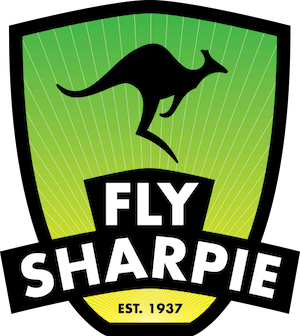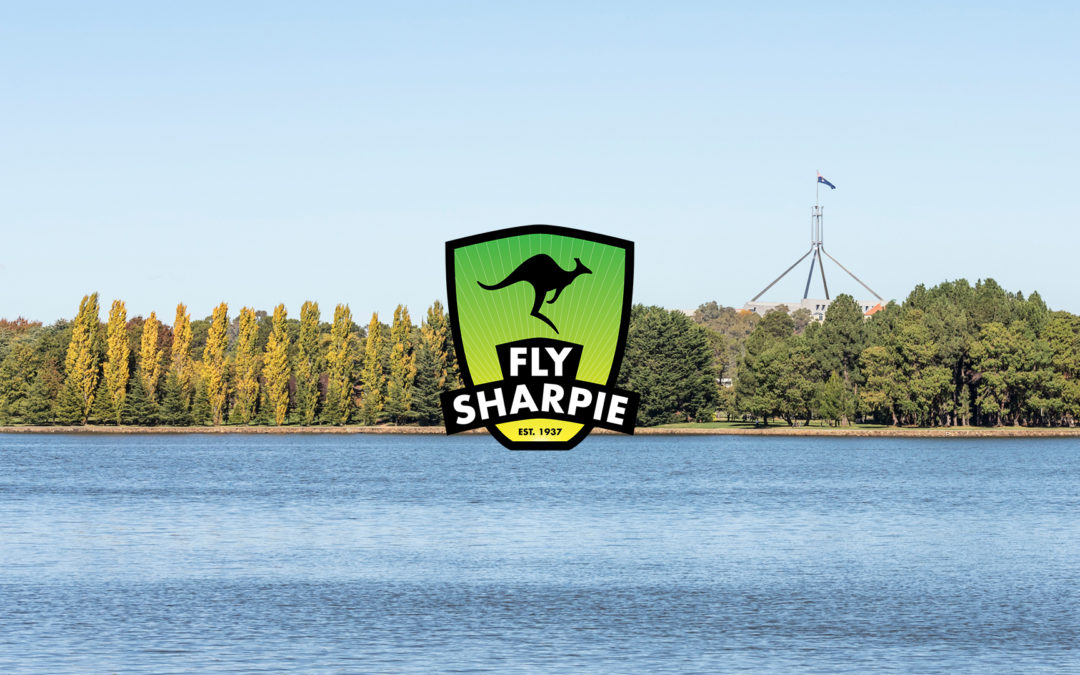NATIONALS CAMPAIGN – the President Ford perspective
A bit about the past….. “President Ford”, as has been documented, is a home made boat made out of gaboon plywood, epoxy resin, balsa and other bits and pieces. It has always been in our opinion a glamour boat to sail. It was launched in November 1992 for the Melbourne Nationals (a bit late, I know!) and ended up being placed in the low to mid teens for most of the races and the overall regatta. A comment made to me at the time is still clear in my head today after that performance: ‘Those consistently ordinary placing’s are the sign of a slow boat”. After two State Championships and a 2nd placing at the Yeppoon Nationals, I wasn’t really bothered about other peoples opinions of the capability of the boat, or the crew for that matter.
The 1994/95 Adelaide Nationals the following year were a big disappointment as the boat was beautifully tuned and Rick Buchanan (the mainsheet hand for the campaign) had cut some very competitive sails. We definitely had the pace and the skill to win that year but like many well planned ideas, things didn’t come together as expected.
Forward to October 1995…… John Hew and I sat down one weekday morning to discuss a strategy. We had just completed fairing and painting the boat and had everything but a skipper. We made out a short list of candidates and I got on the phone. The next afternoon we were out by ourselves off Black Rock with a young 19 year old on the helm named Stewart Rose. We had found Stewart working at the Irwin Sail Loft totally pissed off with sailing and intent on taking up a professional cycling career. 470 sailing can do that to you…\like the way he steered the boat that afternoon we were ready to suggest he was on the right track with his riding. But after a quick chat, John and I decided to give him a go as he had no commitments to restrict our training and a willingness to travel to Busselton. Besides, we thought he could only improve..,..
Over the next 7 weeks we did two weekend trips to SA to give Stewart a feel for a sharpie race with 20 – 30 boats and to give us some much needed time together as a team. At the end of one of the races in SA Stewart asked me how I thought we were travelling. I pointed to Mal Higgins who was winning the race about 15 boat lengths ahead and told him that Mal was up where the top 5 will be at the Nationals. It made our goal suddenly appear more attainable, even to me. The 8 hour drive each way allowed the crew to get to know each other pretty closely and we disclosed, openly our short term goals for the next weeks and the longer term goals for the Championships and every other issue and interest that popped into our heads. Without directly making it a team building exercise, the time together was invaluable.
Our nights training at home on Port Phillip Bay consisted of a little straight line work and hundreds of tacks and gybes. The sessions were mostly well under 2 hours to make them short and sharp. Boat tune wasn’t a big issue as we had no opportunity to do any serious boat on boat tuning and I had a pretty good idea our speed was ok anyway, so we concentrated on having the sharpest crew work.
New equipment: About 6 weeks before the Nationals I replaced trap wires, side and fore-stays, ropes under high tension and for this year, a suspect rudder stock. I also had all the dings taken out of the blades. It takes a lot of the worry out of equipment failing at the wrong time. I ordered a full set of sails from Lindsay Irwin which I knew were on the pace. I also bought a small spinnaker as I was wary of being caught out with the boat-busting tight reaching angles we found at the Adelaide Nationals.
Two weeks can be a long time at a carnival and the crew have to be comfortable. We had rented a nice house close to the club that was just that, big and comfortable. We had little daily routine but we did have a couple of set appointments we tried to keep on race day. One was a time to be at the Yacht Club, the other was the time we hit the water. We stuck to the latter time religiously.
We had no plan for the overall series but had instead a daily race plan. In our discussions we talked about the best crews in the fleet and our rate of improvement. We knew that we were underdone in terms of preparation but I figured that we would have the biggest rate of improvement of anybody after each race and I kept reinforcing this to Stewart and John. As for the daily race plan, it was to go top 5 placing. The motivational pitch was to go out there and “SMACK EM* (one of Stewart’s colloquialisms) and for laughs and morale we said this before every race.
Once on the water on race day we found a tuning partner, set the boat up as best we could and talked about where we wanted to go on the course. The idea is to leave nobody on the boat wondering what’s going on. There was nothing revolutionary about the way the boat is set up. The forestay has 3 marks, forward, upright and back. We always started upright and then tuned forward for the lighter days and back with the wind strengthening. We sail the windier days with a lot of centreboard up (12 to 18 inches). A texta on the boat is an added bonus. Whenever we had a fast setting, we marked it, as well as filling the deck with compass angles.
Decisions on starts were made with about 5 minutes to go, but if conditions changed we had no hesitation in changing our plan at very short notice and we continually rechecked the start line up to about 2 minutes before the start.
Boats and sails aside, I believe the biggest competitive edge can be gained from the three beds in the boat. As a team they will make a huge difference between winning and losing. Calm and efficient heads prevailing will consistently win out. Low crew morale and infighting on a Sharpie is as good as throwing out a bucket tied to the transom. John and I had the benefit of sailing together at Melbourne and Yeppoon and we took every short cut in the book to add Stewart to that partnership. For a sometimes cheeky teenager Stewart very quickly soaked up and applied many of the pieces of information we fed him on getting the most out of the crew and the boat. It was one of his greatest assets along with his raw talent and total dedication to doing everything at 1000%. This sometimes boiled over in his enthusiasm for yachting perfection with a raised voice and his keenness to never give an inch but the ability of the team to get quickly back on track is what matters, and that we did. I have to mention though that his boat handling scared the shit out of John and I on numerous occasions.
I was once told that the mainhand is the engine room of a Sharpie and Stewart and I had the benefit of seeing his John’s work rate close up. He worked and hiked harder than most as well as pulling all the strings when we were changing gears. With a fairly light all up crew weight, John’s ability to keep us on the Pace in the windier conditions in what I could only describe as an aggressive sheeting and hiking technique was one of the vital ingredients that won us the regatta.
It’s much more than simply keeping the boat flat.
For the Busselton campaign, no-one on the boat smoked. Stewart’s fitness is unbelievable and so would yours if you rode 500+ km’s per week. John had given up the smokes and rode to work every day as well. I stuck mainly to the gym trying to keep my weight up. All that helped to make up a competitive package. What happened out on the course, the weather, the starts, the tactical moves, the incidents and the luck just happened. Being good enough to take advantage if an opportunity presents itself and giving yourself those opportunities were the keys of our successful and surprising campaign.
Technical stuff: The mast is a soft 1.7mm Goldspar. Boom and kitepole are also Goldspar. Spreaders are 3m above the deck. They are approx 390mm long and raked 145mm aft from the mast track. We used end boom sheeting for the main. The entire boat is fitted with Ronstan gear except the mainsheet ratchet block and a roller bearing wire forestay block which are Harken. All ropes for rig tension and other systems are a 4mm spectra style material. Upright rake is set on a bare mast from the black band to the top comer of the transom at 25′ 2″. We used Irwin jibs and spinnakers and swapped between an Irwin main and a Horizon Main. This was mainly because of our short lead up time and we had cut too much luff curve into the Irwin main for light conditions (in our opinion). It did however have the effect of making the Irwin extra nice on the windier days. The half season old Horizon main was cut by Rick Buchanan, now working as Walker sails in Hobart and is one of the prettiest sails you’ll see, for the fashion conscious Sharpie sailor. Blades were made by Rob Botterill. All up crew weight was about 220kg
A note from the owner/crew of “President Ford” and writer of this article Rob Oshlack:
I would like to take this opportunity to openly and sincerely thank both John Haw and Stewart Rose for their support, friendship and enthusiasm in participating in the Busselton Australian Championships, and the many other people that in some way assisted our campaign and helped us to fulfil a lifelong goal.

